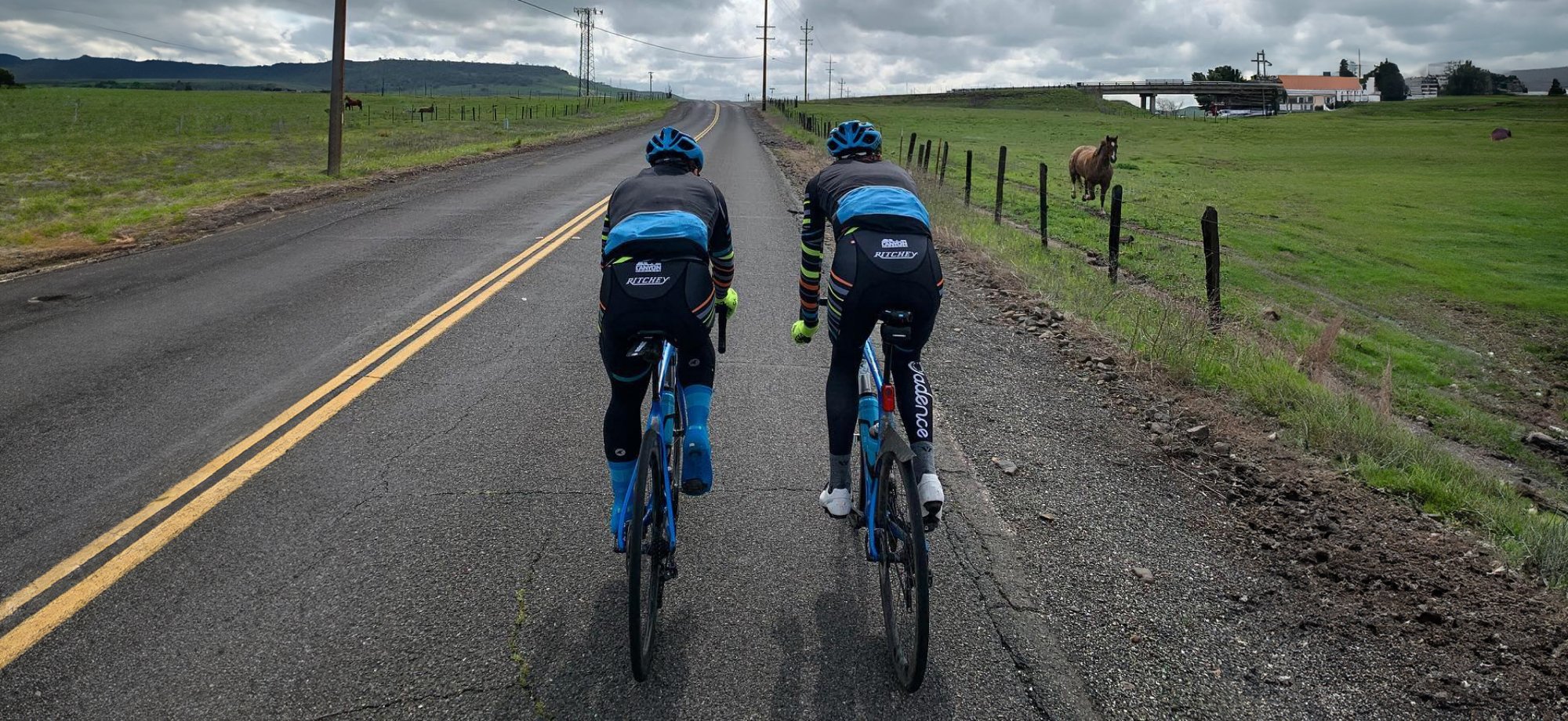Winter Base Miles
How to make the most of your off season.

It's the first group ride of the year and you're feeling fit. The foul weather has finally broken and you're chatting with old friends and making new ones as the landscape streaks by. Just ahead the road pitches up into the first climb and someone makes a move. In a moment of something between excitement and panic you decide to follow. You're reaching for their wheel, and reaching, and reaching. Your legs burn as the lactic acid builds. Your heart pumps its way into your throat. The landscape fades as your entire world shrinks to the length and width of their rear hub. But even it slips away. The rest of the group comes around you. Their derailleurs snap into taller gears, but you're going backwards. There go your old friends, and your new ones, and somehow they're still chatting away as they were before while you're sucking air through a straw. You try to catch the last wheel but you're too late and it's too fast. It's gone.
Getting shelled off the back of a fast ride is a great training opportunity we've all experienced before, and there's certainly nothing wrong with it. But you're not reading an article called Winter Base Miles for nothing. If you're interested in charging into spring with the strength to lead out club rides and races, consider incorporating a dedicated winter block to your training cycle. This off-season block can both help you maintain the fitness you built during the previous season, and can serve as a foundation of fitness for the next one. Typically, its undertaken at low to moderate intensities for endurance durations, and under certain circumstances it can serve as a great community-building experience during winter's chilly, short days. Read on to explore its benefits and limitations.

How it works
The modern concept of winter base miles emerged from the culture of traditional European bike racing. It's founded on the principle of aerobic base training, which involves accumulating a substantial volume of work over a long period of time at low intensities. In the mid-20th century, this meant cyclists from across Europe flocking to Italy to soft pedal 40+ hours per week through the mild winter. By the 1990s, scientists had observed this type of training led to greater capillary and mitochondrial densities, which enhanced blood perfusion into the muscles and increased metabolic capacity for carbohydrate and fat breakdown.
Taken together, cyclists with these attributes have an increased maximal sustained power and better fat oxidation. In short, an aerobic base can help your muscles get more oxygen when they need it and do a better job conserving the limited amount of carbohydrates stored in your body by converting more fat to energy.
Because winter base miles are a period of low intensity training, they can also help you avoid the risks associated with overtraining. Between spring classics, summer stage races, fall fondos, and winter cyclocross, there are plenty of events to keep you riding at race intensities year round. But exposing your body to excessive and repetitive stress without adequate rest can cause chronic fatigue (decreased muscle strength, endurance, and neuromuscular function), catabolysis (a state where the body breaks down muscle for energy), and a decreased capacity for glycogen storage and oxidation. Dedicating a block of the year to low intensity rides is a surefire way to allow your body to recover from a long year of racing.
More isn't always better
Despite these apparent benefits, 21st-century research has shown that riders who are already fit could have a more productive off-season by using a structured training plan with a variety of intensities, including anaerobic intensities. As a result, many experienced riders are moving away from incorporating so many winter base miles into their training. Even pro racers have started reducing the amount of time they spend riding low-intensity miles in their off-season to mix in alternatives like interval training and weight training.
But no matter who you are or how long you've been riding, the most important thing you can do is to listen to your body. Don't overdo it during the base-building phase. It's better to gradually and consistently increase your miles and intensity over time, rather than trying to do too much too soon with too little rest. This will help you build a strong foundation of fitness, reduce your risk of injury, and avoid the pitfalls of overtraining.
